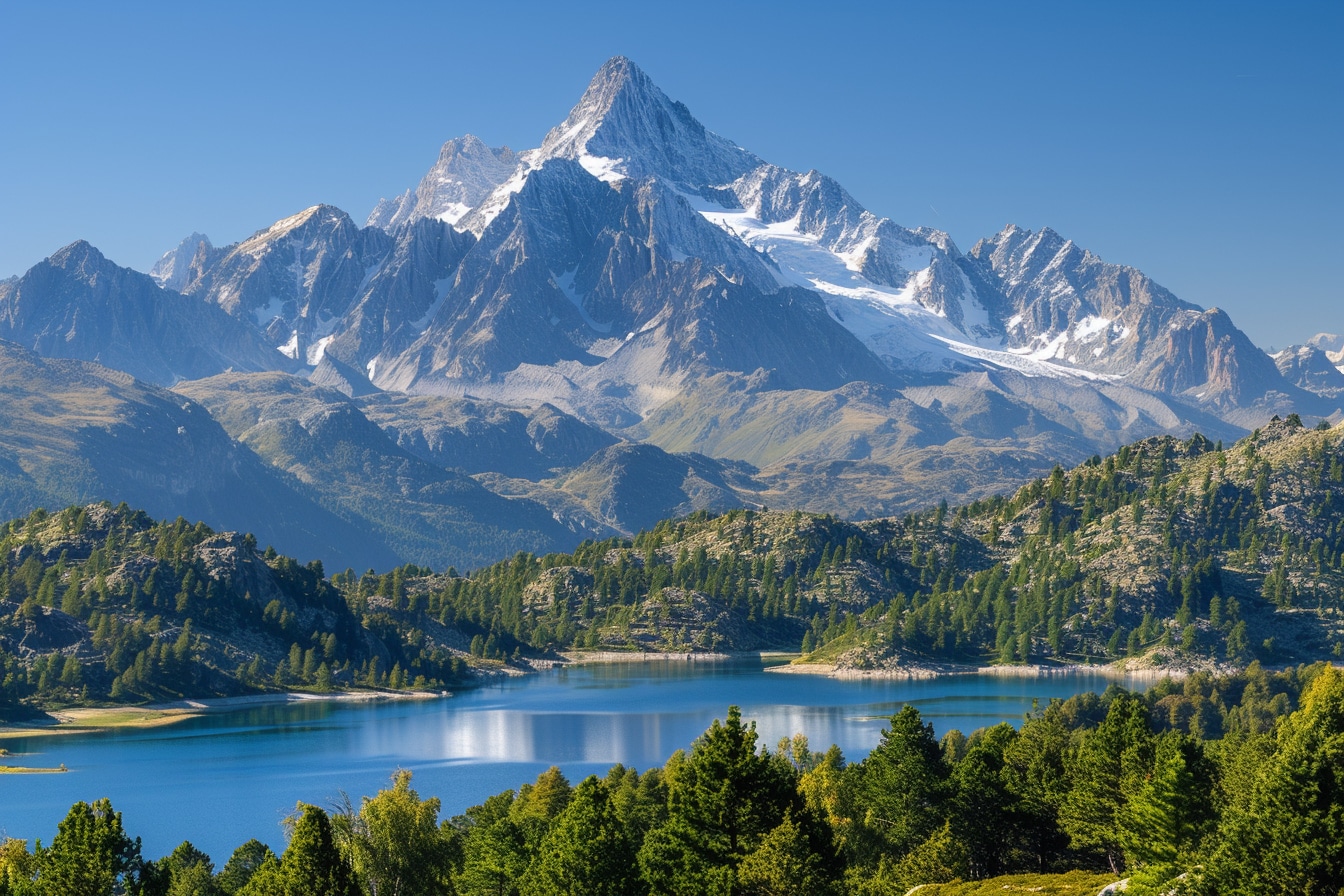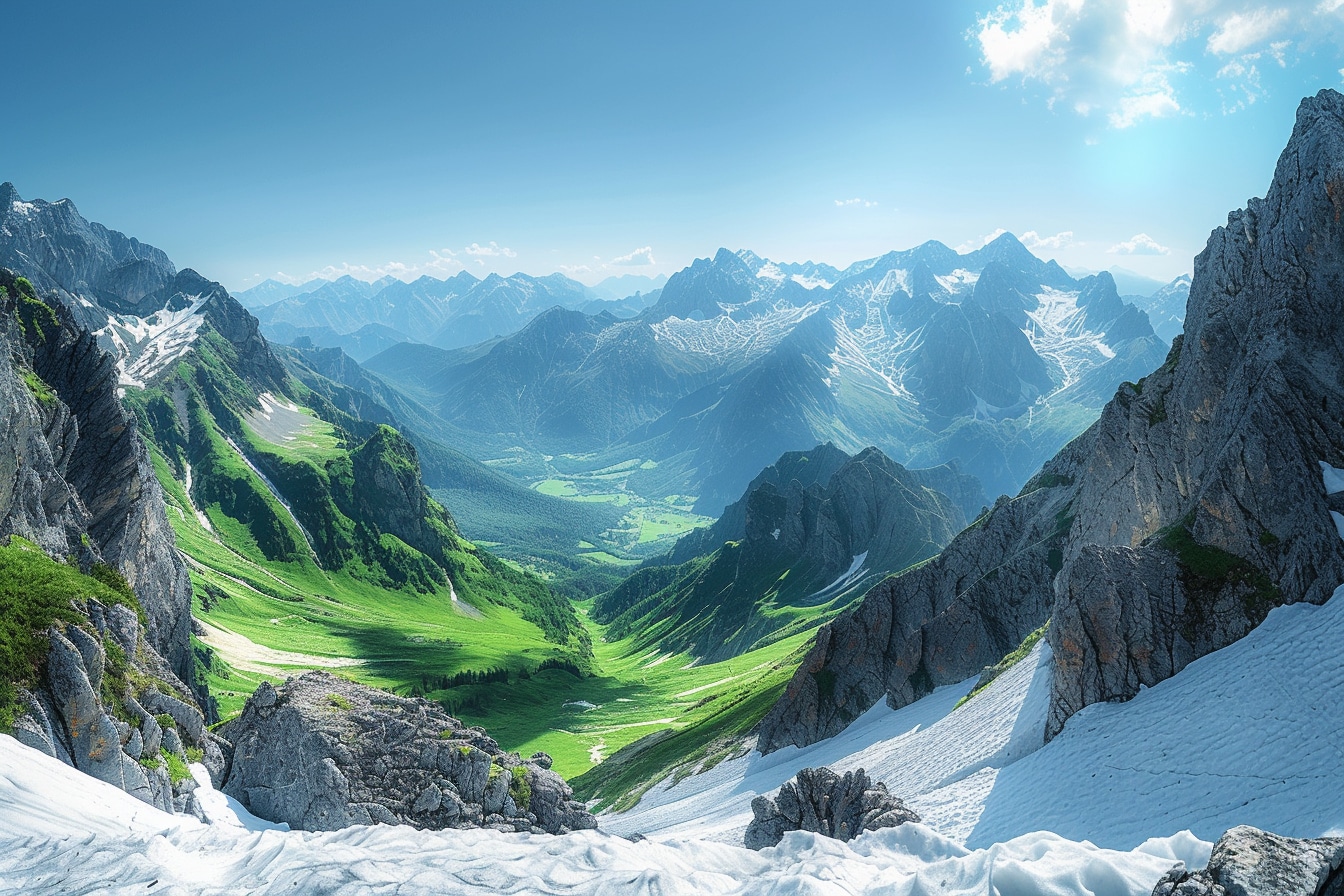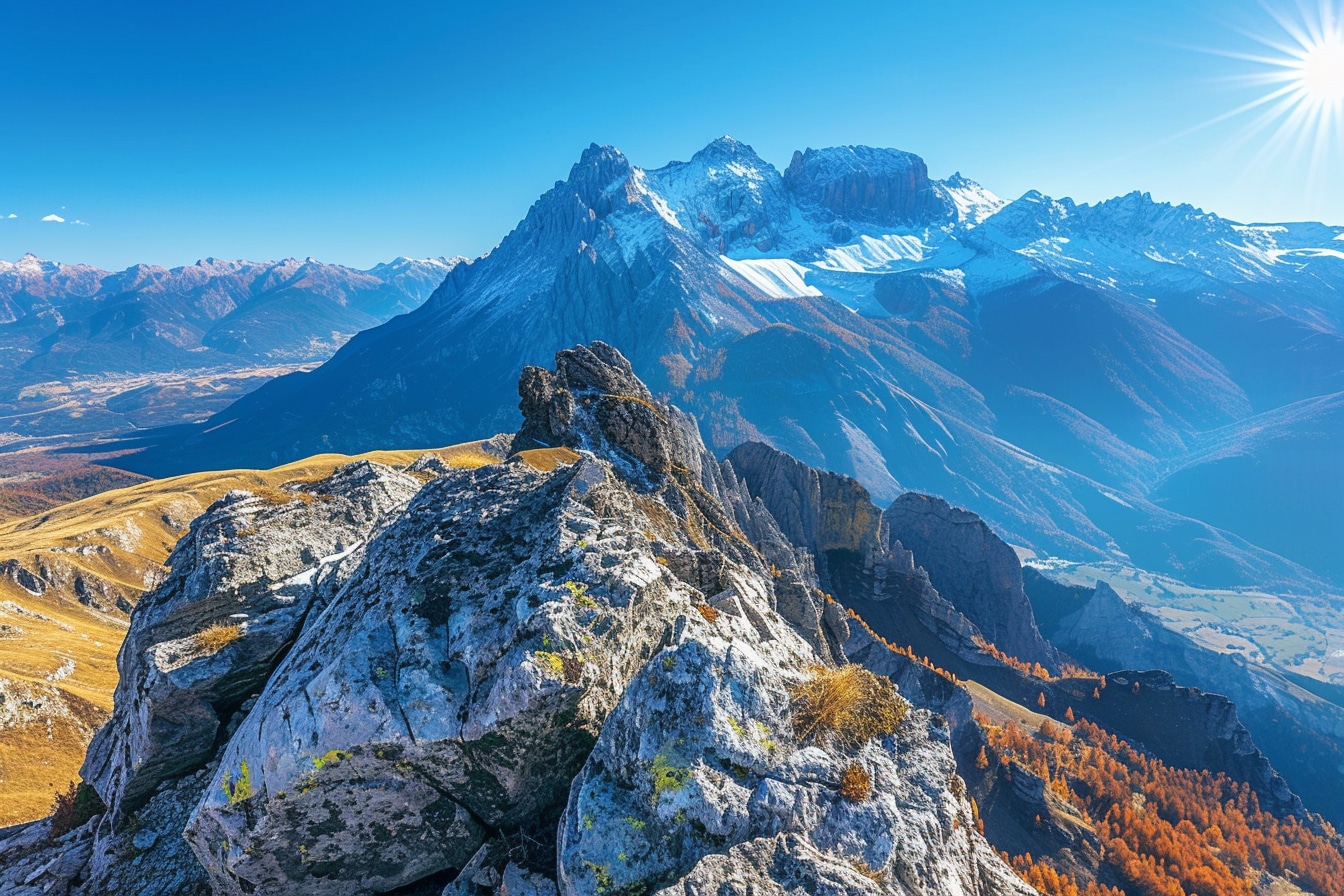Unraveling the Majestic Alpine Divide: The Mountain Range that Sets France and Italy Apart


Imposing and majestic, the mountain range which forms the natural border between France and Italy is none other than the Alps. This Alpine massif stretches elegantly over several European countries, but it is in its spread between France and Italy that it takes on a particularly grandiose and complex form. The Alps shape a landscape where narrow valleys, high peaks and sparkling glaciers combine.
The Alps are not only a geographical demarcation, they represent a real historical, cultural and environmental issue. They are the scene of many stories, legends and human exploits. Within them, French and Italian mountain dwellers have developed traditions and lifestyles of their own, testifying to a rich heritage.
A multifaceted relief
The Alpine relief is characterized by its high massifs, its deep valleys and its hanging valleys. Among the emblematic peaks that punctuate the border, Mont Blanc stands as the highest point in Western Europe with its 4,809 meters. The Alps also have other jewels such as the Massif des Écrins, the Vanoise and the Dolomites.
The Alpine landscape is distinguished by its diversity: on one side, sharp mountains, overlooked by imposing glaciers like the Mer de Glace. On the other, green spaces, colorful alpine meadows where herds graze in summer, contributing to the mountain economy.
The imprint of nature and man
The interaction between nature and man in the Alps is the basis of the shaping of this environment. Mountain agriculture, with its specificities such as transhumance, has contributed to the shaping of the Alpine landscape. Likewise, tourism, which is a predominant economic activity, has led to the creation of infrastructures such as ski resorts, while respecting fragile ecological balances.
Man has also left his mark on the massif through the construction of astonishing structures such as the Mont Blanc tunnel, which connects France and Italy under the mountain. This technical feat, like many long-distance hiking trails that cross the Alps, shows how humans have adapted to their environment to tame it.
A unique alpine ecosystem
The diversity of natural environments offered by the Alps is the cradle of a rich and varied ecosystem. Alpine fauna and flora are adapted to difficult climatic conditions: low temperatures, significant altitudinal and seasonal variations. There are endemic species such as the Alpine ibex and the edelweiss, symbols of Alpine resilience.
The protection of this ecosystem is essential. Numerous national parks and nature reserves, both on the French and Italian sides, have been set up to preserve biodiversity. They are also places of education and awareness of the Alpine environment.
The Alps, land of sports and leisure
The Alps are a paradise for sportsmen and nature lovers. The activities are numerous and varied, summer and winter. Skiing, mountaineering, climbing, hiking and mountain biking are practiced by millions of visitors each year. The Alps offer an exceptional playground where everyone can experience the thrill of mountain adventure.
Pleasantly, the infrastructures dedicated to alpine leisure activities are carefully integrated into the natural environment, allowing you to live unforgettable experiences in the great outdoors while preserving the harmony of the place. The pleasure of sliding on the snow or hiking at altitude remains an incomparable and enriching experience.
Alpine culture, a link between peoples
The Alpine massif is also distinguished by the richness of its culture and folklore. This border territory allowed the exchange and mixing of French and Italian traditions. Local dialects, gastronomy, music and dances are all elements that shape the identity of this region.
Despite the natural barrier that the Alps constitute, populations have been able to create links, based on sharing and exchange. The conviviality of the mountain refuges, the village festivals, the traditional markets testify to this desire to share and live together.
Environmental and climatic challenges

Faced with the threat of global warming, the Alps require special attention. The melting of glaciers, the weakening of ecosystems and tourist pressure are crucial issues. The challenges are significant in reconciling economic development and protection of the Alpine environment.
Initiatives are multiplying to ensure the sustainability of the Alps. Sustainable development projects, focused on ecotourism and soft mobility, are emerging. Residents and local stakeholders are committed to limiting the ecological impact and raising awareness about the preservation of this exceptional natural heritage.
The Alps, the natural border between France and Italy, constitute a rich, lively and fascinating space. This exceptional territory is an invitation to discovery and wonder for those who walk its paths or venture into its valleys. The balance between respect for nature and human development must be a constant quest to safeguard this world heritage. The Alpine chain, in its splendor, remains a powerful symbol of the union between people and their environment.
Comments
Leave a comment